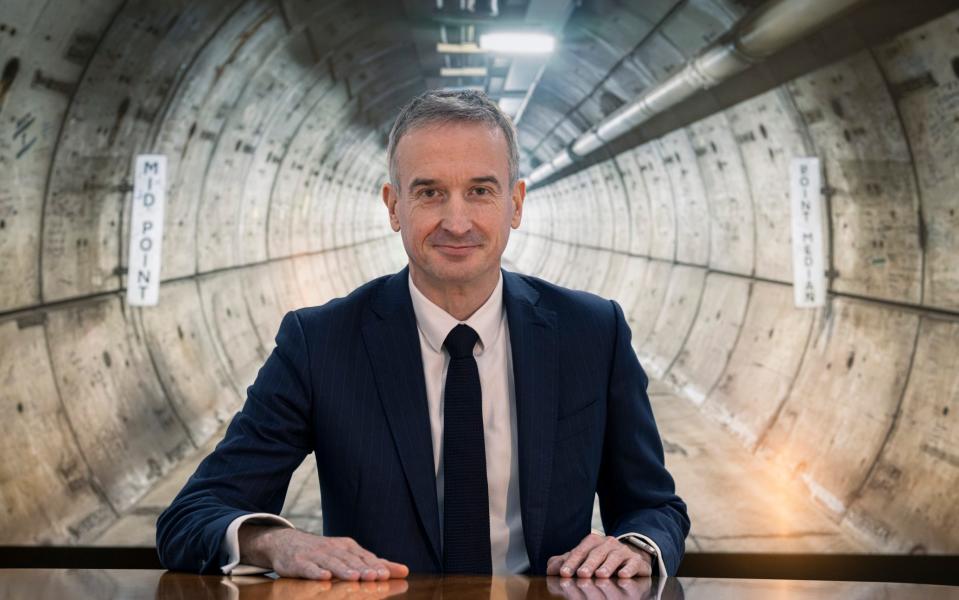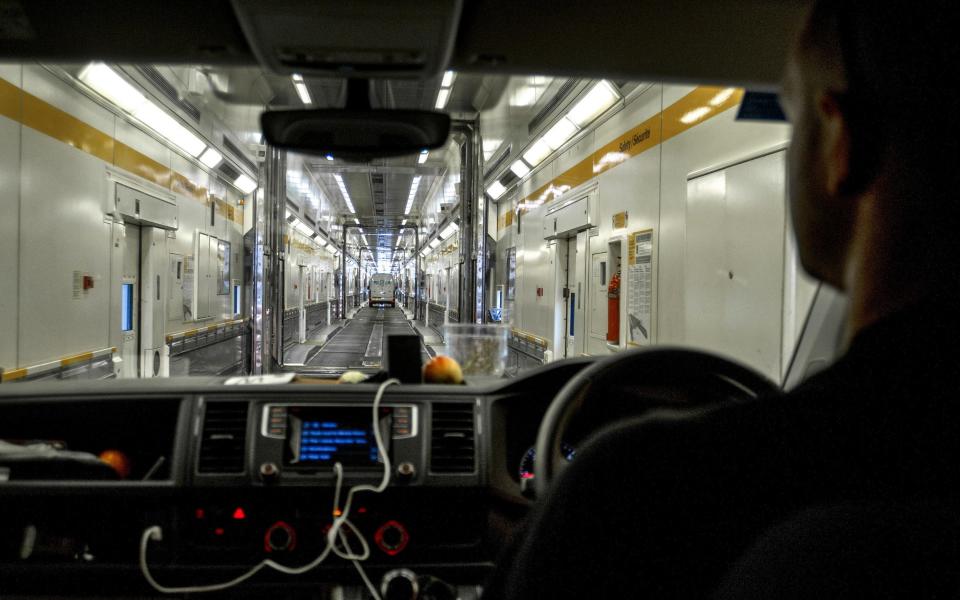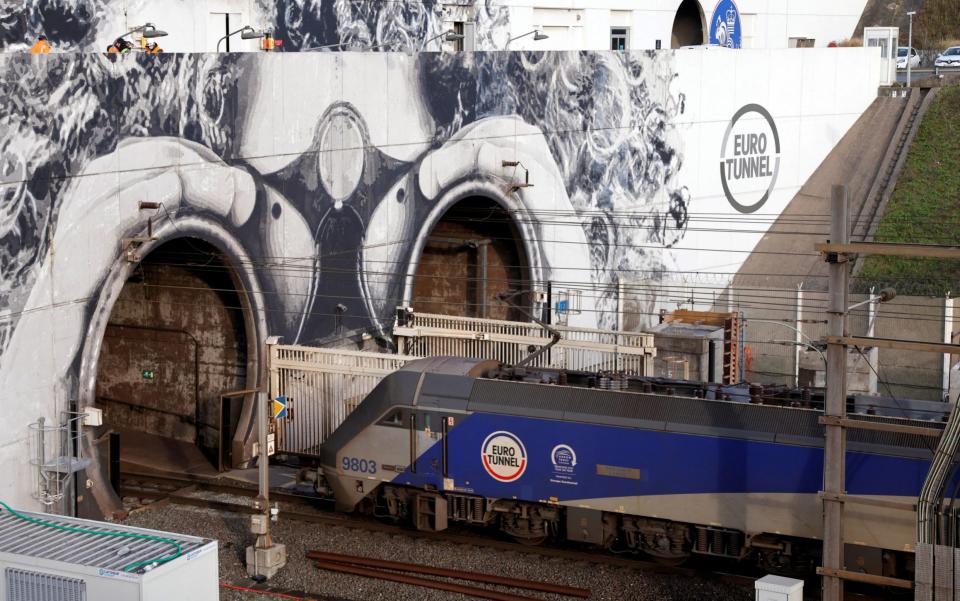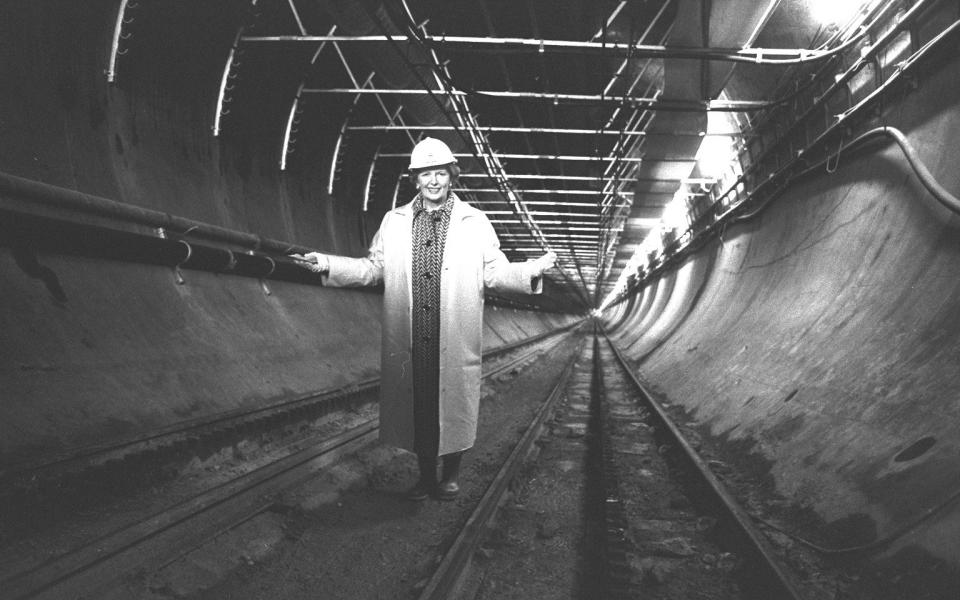Green transport shift will help rail overcome challenges, says Channel Tunnel boss

The boss of the Channel Tunnel says new measures are being put in place to simplify border checks from next year, amid warnings that tougher controls post-Brexit risk putting off scores of travellers.
Yann Leriche, chief executive of tunnel owner GetLink, says new technology will make it easier than ever to catch cross-Channel trains, as he predicts that green rail transport will thrive in the coming years.
However, his optimistic tone was struck before the latest bout of cross-Channel rail chaos, as flooding caused the mass cancellation of trains for thousands of passengers travelling between London and Europe before New Year’s Eve.
The disruption, caused by a leak near Ebbsfleet International Station in Kent, forced rail operator Eurostar to issue an urgent apology to stranded passengers.
While the floods were not directly connected to GetLink’s operations, they may serve as the latest obstacle in convincing passengers of the rail sector’s reliability.
However, Leriche remains confident despite the challenges facing the sector, which also include post-Brexit border checks.
“Firstly, we are more modern than ever,” he says in an interview held before the flooding. “We are doing a lot to digitise everything and we are now back to the crossing times we had before Brexit.
“We are what people want today – customers want to travel on a green mode of transportation.”
From October 2024, the introduction of the so-called entry/exit system (EES) will force travellers from non-EU countries to have their fingerprints and photograph recorded in a database when they enter the bloc.
GetLink – which carries vehicles through the Channel Tunnel on its LeShuttle trains – has warned the checks could add five minutes to the typical journey time of a car carrying three people.
The changes could also result in longer queues for Eurostar trains at St Pancras International.
However, he says the solution will involve close cooperation with British and French authorities and see passengers submit extra information at home before they travel – as was done with Covid documents during the pandemic.
On top of this, GetLink is spending £67m to build a new processing area at Folkestone, which will be able to handle 500 cars an hour.

EuroTunnel staff are also be going on a fact-finding visit to North America in the coming weeks to learn how officials on the US border cope with arrivals from Canada and Mexico.
“We’re going to develop, step by step, additional technology to simplify and simplify,” Leriche insists.
He argues that GetLink, which also runs rail freight business Europorte and a UK-France power interconnector, already has ample experience in easing such hold-ups.
For example, since Brexit in 2020, the company has worked with authorities on both sides of the Channel to minimise the paperwork truck drivers need to present at the border.
In a similar vein, Leriche says he worked around the clock with the UK and French ministers during the pandemic to prevent checks of vaccination certificates and negative Covid tests causing chaos at the border.
To crack the problem, he persuaded Grant Shapps, the Transport Secretary at the time, and Jean-Baptiste Djebbari, his French counterpart, to meet at Folkestone to hammer out an agreement in the summer of 2021.
Both ministers – each of them aviation fanatics and qualified pilots – turned up in their own small planes, landing them in a field next to EuroTunnel’s offices.
The talks helped EuroTunnel secure access to both government’s tech systems, allowing travellers to submit their Covid documents to LeShuttle and have them checked in advance, reducing the risk of delays on the day.
These lessons will help the company overcome any delays arising from EES as well, Leriche argues.

He is evangelical about the potential of technology to cut through bureaucracy, having seen first-hand how the emergence of Uber taxis rocked his former employer.
As an executive at transport operator Transdev, Leriche was dispatched across the Atlantic to fight back against the Silicon Valley smartphone app, which was upending his company’s North American taxi business.
“Our taxi company’s quality was average, in many cases interchangeable,” he explains, pointing to ways in which Uber’s app gave customers a better service.
“With us people would call and say ‘Hey, where’s my taxi?’ and someone would tell them, ‘Don’t worry, it will be 10 minutes’. But really, they had no clue, because no one knew where the taxi was.”
By comparison, Uber customers could simply look at their smartphone to see how far away their cab was – and give drivers who turned up late bad reviews.
Since he returned to Europe to take charge of GetLink in July 2020, Leriche has taken this lesson to heart, pushing employees to simplify EuroTunnel’s processes with technology as much as possible.
And while some believe traffic through the “Chunnel” is doomed to decline, Leriche is instead agitating to expand the number of services that pass through.
Looking back to the grandiose vision first set out by Margaret Thatcher and Francois Mitterand in 1986, he says the tunnel still has unfinished business.
It was intended to open up a plethora of new services between British and European cities – yet to date, travellers can only travel between London, Paris, Brussels and Amsterdam, with Eurostar remaining the lone tunnel operator of passenger trains.

Experts have long blamed this on the unfortunate timing of the tunnel’s opening – just as air travel deregulation was helping budget carriers take off.
But the lack of competition arguably aggravates the current problem, resulting in higher prices for trains than for flying.
Meanwhile, barely any rail freight passes through the tunnel.
Leriche wants all of this to change.
At the moment, the tunnel carries about 400 trains per day. At full capacity, it should handle 1,000.
“We have not reached the maximum potential of the tunnel – by far,” he says.
He may soon get his way. This year, Spanish start-up Evolyn and Virgin tycoon Sir Richard Branson emerged as potential challengers to Eurostar’s monopoly on cross-Channel passenger services, and Leriche hints further companies are waiting in the wings.
Even the best of contenders still face hurdles, however.
Up to this point, rivals have struggled to rival Eurostar due to tunnel safety regulations that require specific design features on trains.
Since Brexit, Eurostar trains have also been running part-empty because the existing border facilities cannot process passengers fast enough to fill regular schedules.
But rather than waiting for train operators to approach EuroTunnel and come up with solutions, Leriche wants to speed things up by laying much of the groundwork for them.
He has convinced major train manufacturers to make their designs tunnel-compatible from the get-go, and has carried out studies of the European cities where new cross-Channel services could run.
During our meeting he whips out one such document, flipping through the pages showing detailed floor plans for a new potential terminal in Cologne.
“Of course, there is still work to be done. But we know what to do and everyone is ready to go for it,” he says.
The project resulted in EuroTunnel’s eye-catching announcement this month that it is aiming to double the number of European destinations available to London travellers, with other targets including Frankfurt, Geneva and Zurich.

The thing that links these places is the time they can be reached.
EuroTunnel’s research found people generally preferred not to travel by rail for more than four hours, taking planes instead for longer journeys.
“There is market share to be taken from the airlines,” he says.
From a broader perspective, Leriche also believes rail operators currently have the momentum. With airlines on the defensive over their carbon emissions, trains powered by green electricity offer a climate-friendly alternative.
EuroStar says a typical train journey from London to Paris generates about 2 kilograms of carbon dioxide. By comparison, the average flight between the two cities generates about 130 kilograms of CO2.
And Leriche argues the recent phenomena of “flight shame” and “train bragging” among young people on social media shows travellers are growing more climate-conscious.
“It’s EuroTunnel’s time,” Lariche says. “And we have a lot of opportunities to grasp.”

 Yahoo Finance
Yahoo Finance 